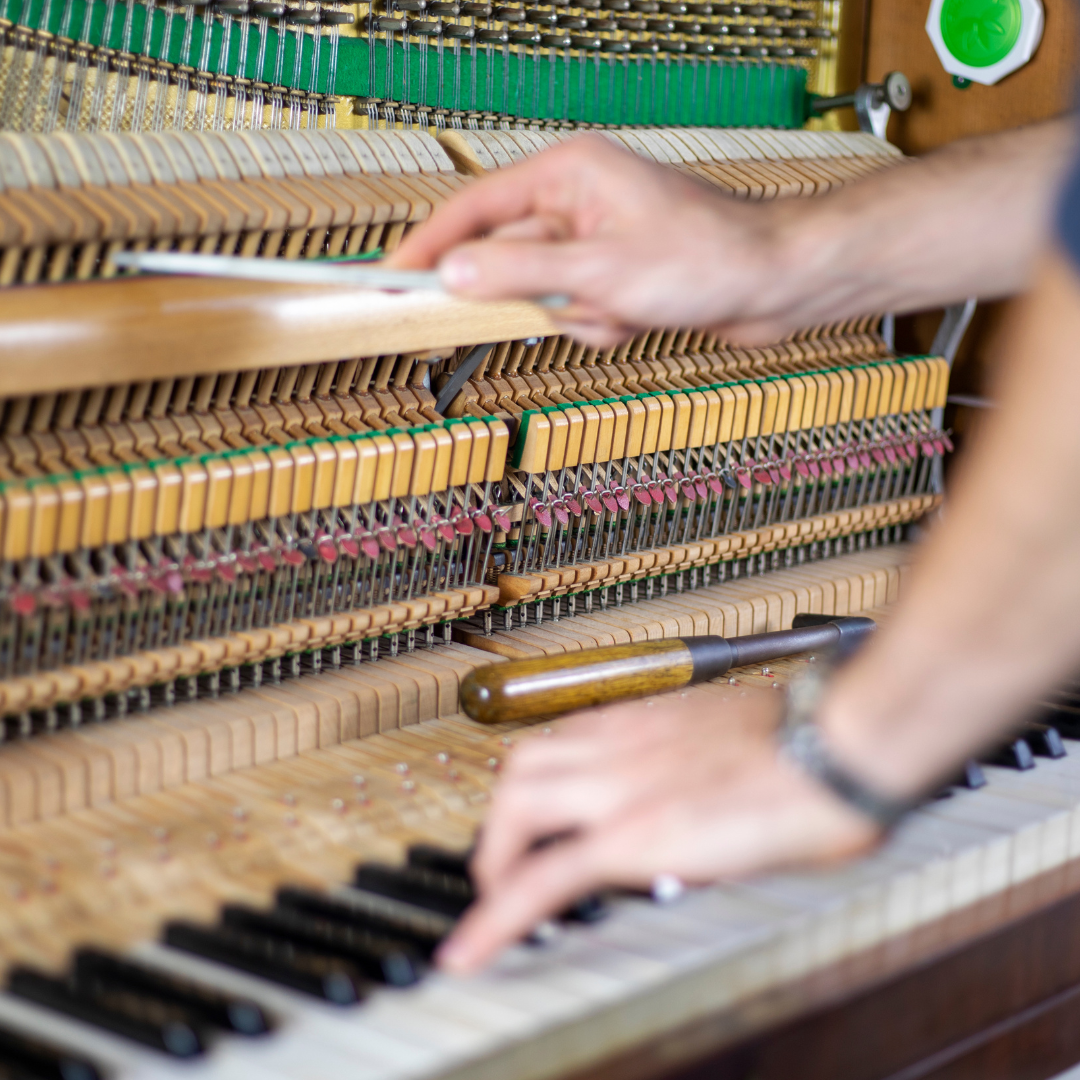The discussion within the piano tuning community surrounding whether pianos should be tuned to A442 Hertz (Hz) or A440 Hz is debate that many piano technicians, composers and players have bickered over for many years.
For the average piano player or those who just play their piano for leisure, this is likely not something that you have ever thought of, however particularly within the classical world and for those who play with others, the tuning of the piano can affect how those around you play and sound, so it may be something you might want to consider or learn more about.

What are A440 and A442 tunings? And why do they matter?
Both A440 and A442 tunings refer to different frequencies of what frequency the note ‘A’, above middle C should ring at.
When it comes to ‘official’ guidelines, at present A440 (also known as the Stuggart pitch) is widely considered as the standard tuning pitch and is the official frequency standardized by the International Organization for Standardization. In the UK A440 is widely regarded as concert pitch, however in continental Europe, A varies between 440 and 444Hz for many concert performances. This has led to the progressive implementation of more and more pianos, concert halls and orchestras in Europe being tuned to A442.
Whilst this may sound like a small change, the debate instead revolves more around how this subtle change in frequency, makes the music ‘feel’. There are those who even believe that certain tuning pitches can have cosmic, even healing effects to one’s soul. For example it is not too unheard of, particularly in the guitar world to have your instrument tuned to A432 for this reason. In the piano concert world however, it is more closely linked to giving more ‘body’ to the sound or making the overall sound of the orchestra feel more full.
What difference does tuning to A442 make?
For most piano players or those without perfect pitch, you wouldn't even be able to tell if your piano is tuned to A442 or A440. The difference is so minute that for 99% of people, you can’t hear the difference between the two, especially if the piano is being played on its own.
For those few who can hear the difference, there is a slightly different tone and lowness to A440 than A442. Despite being the same ‘note’, some feel that tuning to A442 makes the music feel more alive or punchy whilst others argue that A440 creates a ‘fuller’ tone.
This is the basis of the argument and what puts many musicians at odds with each other. As music is so subjective and personal to the individual, many feel their tuning is ‘right’ or ‘sounds better’, you can learn more about this concept around subjectivity and objectivity in music here.
This preference comes down to mostly personal perceptions and emotions. For example if you are in an ensemble that you love and they tell you that 447Hz is the greatest tuning ever, you’ll probably think it is the greatest and want your instrument to be tuned to that frequency, regardless of what a piano technician may say.
There are stories out there of some orchestras even refusing to play unless their piano is tuned to A442, only to find that they are actually unable to tell if the instrument was at 440 or 442.

Should you get your piano tuned to A440 or A442?
When getting your piano tuned, most technicians in the UK will use A440Hz and if this is where your piano has always been tuned and you are already satisfied with this tuning, then there is no reason to change your tuning as even just adding those 2 hertz across the entire instrument can put your piano under further tension and stress.
Overall, the conversation of changing your piano to A442 is largely down to personal preference and there are a few smaller reasons why you may prefer to tune your piano to A442. Namely, if you are playing in a larger orchestra - this is because some instruments, particularly the likes of the Oboe find it more difficult to reach A440.
The other common reason why a piano may be tuned to A442 is because it is produced or made in continental Europe. It is not uncommon for the likes of Hamburg Steinways and C.Bechstein pianos to be tuned to A442 upon leaving their factories because this is the standardised concert pitch in those areas. In some cases, pianos can even be tuned higher than this in order to compensate for loss of tension or temperature changes during transport.
If your piano is happy and you are happy with it, don’t change it. Of course, talk to your technician to see what they recommend, however we would not recommend actively changing the tuning of your piano without reason to do so.
To learn more about getting your piano tuned or serviced by our expert technicians, book a service online here. If you are also considering upgrading your current piano or looking to learn more about pianos, contact our experts or visit our showroom today!

